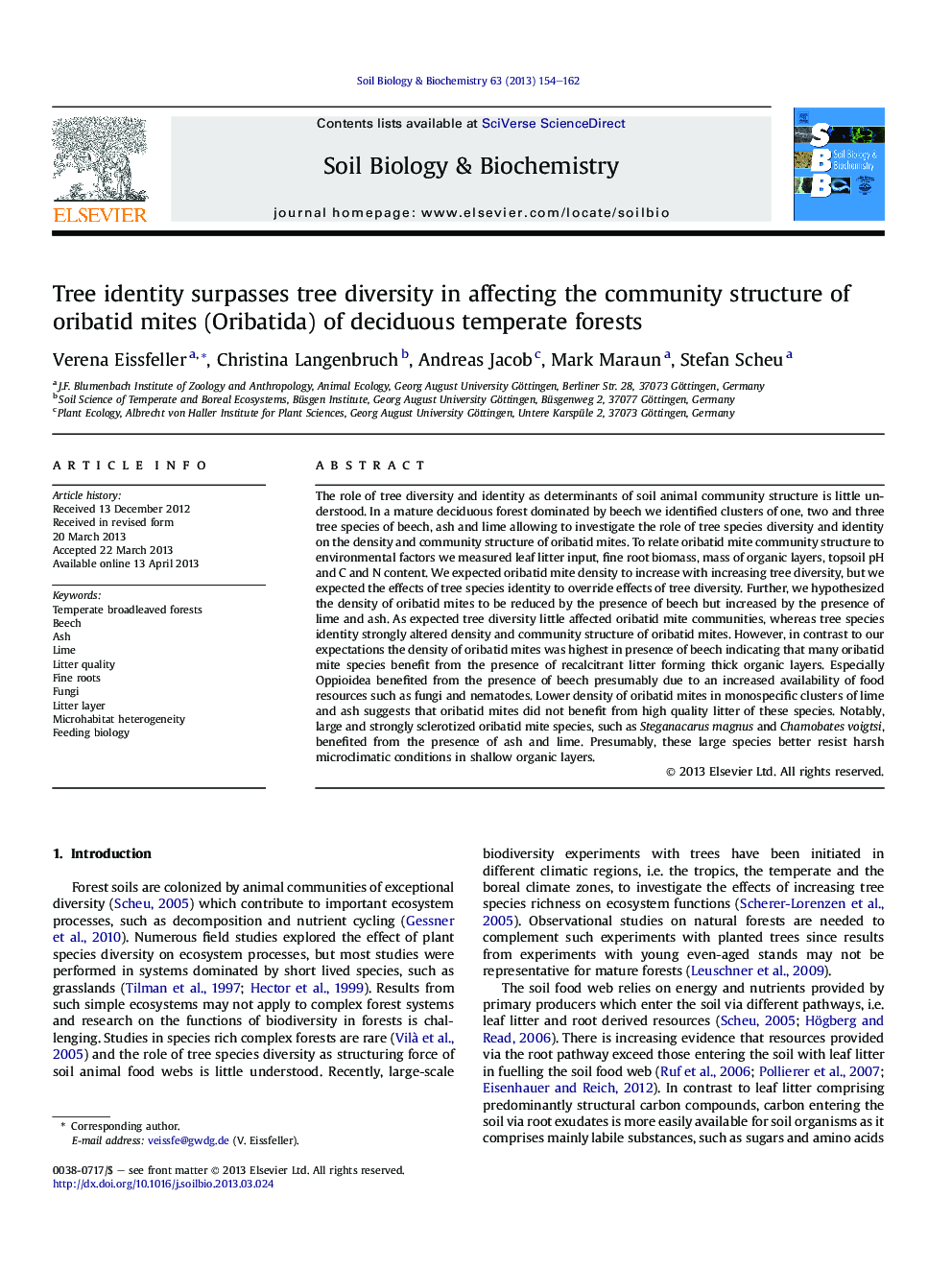| کد مقاله | کد نشریه | سال انتشار | مقاله انگلیسی | نسخه تمام متن |
|---|---|---|---|---|
| 2024818 | 1542621 | 2013 | 9 صفحه PDF | دانلود رایگان |

• A field study on the impact of beech, ash and lime on oribatid mites was conducted.
• The importance of tree diversity as compared to tree identity was investigated.
• Tree identity but not tree diversity altered density and community structure of oribatid mites.
• The results highlight the importance of thick organic layers associated with by low quality litter.
The role of tree diversity and identity as determinants of soil animal community structure is little understood. In a mature deciduous forest dominated by beech we identified clusters of one, two and three tree species of beech, ash and lime allowing to investigate the role of tree species diversity and identity on the density and community structure of oribatid mites. To relate oribatid mite community structure to environmental factors we measured leaf litter input, fine root biomass, mass of organic layers, topsoil pH and C and N content. We expected oribatid mite density to increase with increasing tree diversity, but we expected the effects of tree species identity to override effects of tree diversity. Further, we hypothesized the density of oribatid mites to be reduced by the presence of beech but increased by the presence of lime and ash. As expected tree diversity little affected oribatid mite communities, whereas tree species identity strongly altered density and community structure of oribatid mites. However, in contrast to our expectations the density of oribatid mites was highest in presence of beech indicating that many oribatid mite species benefit from the presence of recalcitrant litter forming thick organic layers. Especially Oppioidea benefited from the presence of beech presumably due to an increased availability of food resources such as fungi and nematodes. Lower density of oribatid mites in monospecific clusters of lime and ash suggests that oribatid mites did not benefit from high quality litter of these species. Notably, large and strongly sclerotized oribatid mite species, such as Steganacarus magnus and Chamobates voigtsi, benefited from the presence of ash and lime. Presumably, these large species better resist harsh microclimatic conditions in shallow organic layers.
Journal: Soil Biology and Biochemistry - Volume 63, August 2013, Pages 154–162